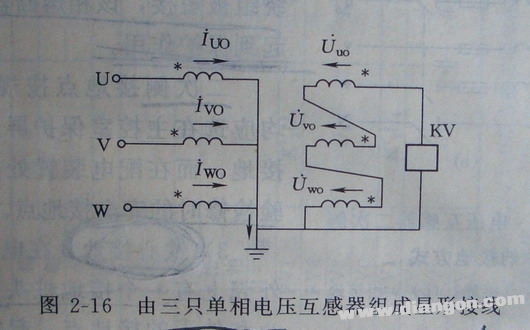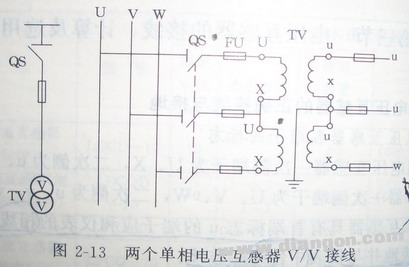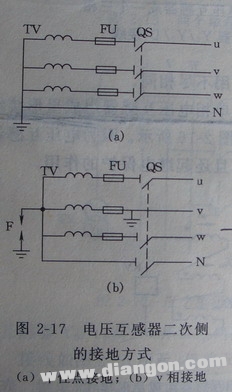There are typically three common methods for grounding a voltage transformer, each serving a distinct purpose in the electrical system:
- Grounding the primary side neutral point
- Grounding the secondary side coil
- Grounding the transformer core
The effects of these different grounding methods vary significantly. Here's a detailed breakdown of each:
1) Grounding the primary side neutral point: When using three single-phase voltage transformers connected in a star configuration, the primary side neutral point must be grounded. This is essential because the voltage transformer not only measures voltage but also plays a critical role in relay protection. As shown in the image below.

If a single-phase ground fault occurs in the system, zero-sequence currents will flow. If the primary neutral point is not grounded, there will be no path for the zero-sequence current on the primary side, and consequently, no zero-sequence voltage will be induced across the open delta winding on the secondary side. This means the relay (KV) won't activate, and no ground fault signal will be generated.
This method also applies to three-phase five-column voltage transformers, where the primary side neutral point must still be grounded. However, when using a VV connection with two single-phase voltage transformers, the primary side should not be grounded. Instead, the secondary neutral point should be grounded, as shown in the next image.

2) Grounding the secondary side: It is crucial to have a grounding point on the secondary side of the voltage transformer for safety reasons. In the event that the insulation between the primary and secondary windings fails, high voltage from the primary side could be transferred to the secondary side. The grounding on the secondary side ensures the safety of personnel and equipment. Additionally, it allows the supply of phase voltage to an insulation monitoring device.
The secondary side grounding can be done in two main ways: neutral grounding or V-phase grounding, as illustrated in the following image.

The specific grounding method depends on the requirements of the relay protection system. For example, if the V-phase is grounded, the neutral point cannot be directly grounded. To prevent high voltage from being introduced into the secondary side due to insulation failure, the secondary side neutral point should be grounded through a protective gap. In case of a breakdown, the gap will discharge, short-circuit the V-phase winding, and blow the fuse to provide protection.
According to industry standards, the secondary grounding point should be located at the terminal block in the main control room protection panel. During testing and maintenance, a temporary grounding point may be set up at the power distribution device, but this is strictly for safety purposes.
3) Grounding the core: A voltage transformer typically has a grounding terminal on its housing, which serves as a safety measure. This grounding point ensures that both the core and the outer casing are safely connected to ground, reducing the risk of electric shock and enhancing overall system reliability.
Lithium-ion (Li-ion) batteries are used in many products such as electronics, toys, wireless headphones, handheld power tools, small and large appliances, electric vehicles and electrical energy storage systems.
Low Voltage Energy Storage
LFP 5-10kWh / LV
LiFePO4 BATTERY, 51.2V 100/200Ah.
LFP5-10kWh/LV is the latest Wall Mounted Lithium Battery for Home Energy Storage system. It is based on lithium iron phosphate batteries and equipped with customized BMS. 6000+ high cycle times, long service life, stylish appearance design, make it popular with many customers, and suitable for daily charging and discharging application scenarios.
Low Voltage Energy Storage LFP5000
LFP2400, LFP5000 are hot-selling Rack Mounted Lithium Batteries provided by Sunket with our abundant experience for Home Energy Storage. It` s long life character, high energy and power density in the industry, fashionable design, easiness of installation and expansion, all reflects the real requirements of end users and strongest technical capability of Sunket.
High Voltage Energy Storage 9-30kWh/HV
·Small size, high integration
·User-defined operating mode is easy to set
·Support on-grid and off-grid switching
·Installation and access points for supporting microgrid energy devices
·Comprehensive energy management, real-time dynamic operation monitoring
·AI cloud computing data processing, intelligent management and control
lithium batteries,lithium ion battery,lithium batteries for sale,batteries,lifepo4 batteries,li ion batteries
Wuxi Sunket New Energy Technology Co.,Ltd , https://www.sunketsolar.com